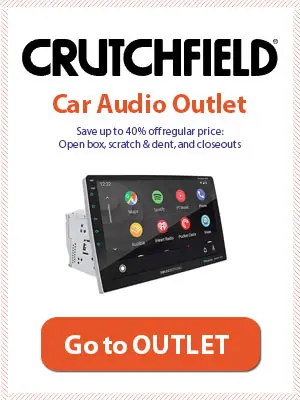To tune a car amp for mids and highs, adjust the gain control, turn on the filters, bring the deep bass, and then fine-tune the amp.
Table of Contents
When you turn on your favorite jams, the music is processed by the car stereo and sent to the linked speakers via the car amplifier. The automobile amplifier includes several settings, including a crossover, to guarantee that the correct frequencies reach your speakers. The last thing you want is for your mids and high speakers to pick up sub-bass sounds.
In this post, you’ll learn about all of the different factors that go into tuning a car amp for mids and highs to get the finest sound from your vehicle’s audio system.
Step-by-Step Instructions for Tuning Your Car’s Amp for Mids and Highs
You can tune a car amp for mids and highs by following the steps below.
Step 1: Adjust the Gain Control
To match the RCA voltage passing through the cables from the stereo, gain control is installed on the car’s amp. As a result, the majority of people misinterpret this as a volume control knob.
However, because you may not have all of the necessary and ideal tools at home, such as an oscilloscope, we recommend relying on your senses and hearing.
- Play a song on your car’s sound system
- Go to the back of the vehicle and reduce the gain on the amplifier to a little more than half-way
- Turn up the volume on your car radio to almost maximum and then turn it down till you detect any noise coming from your front and rear speakers
- Return to the amp and gradually boost the gain with a flat head screwdriver, stopping immediately when you notice any distortion
Step 2: Turn On the Filters
Use high-pass filters while tuning your car’s speaker, inspect the total rating, and adjust the frequency band to the number rated. If you switch on the HPF, you can block bass frequencies. It is, nevertheless, designed to generate deep, high bass.
HPF may be adjusted in multiple amps, allowing it to transition between a wide variety of frequencies. As a result, flick the switch to engage the HPF. You may set it anywhere between 80 and 250 Hz in most cases. And because the optimal HPF setting is around 80 Hz, the audio system can take anything below that.
Set your amp’s LPF (Low Pass Filter) to a frequency below 80 Hz. This allows you to play songs with a lot of Bass, while the mids and highs can handle the high frequencies. Its configuration allows your stereo system to play audio in any frequency band without distortion.
Step 3: Bring the Deep Bass
Although it can be difficult, you must boost the base setting on your amp. If you wish to amplify the bass, turn down the gain control. You tune them both at the same time to generate deep bass without any interference. Although this procedure takes time, you will eventually be able to adjust your automobile amplifier for mids and highs.
Step 4: Fine-Tune
Connect the amps and turn off the volume. If you follow the instructions exactly, you’ll receive an 80 percent loudness without any distortions. If you’re experiencing problems, determine which of your speakers is defective, and then lower the gain setting.
